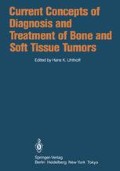Abstract
One of the important factors for determining the destruction of human cancer cells by chemotherapeutic agents is the proliferative state of the tumor cell population at the time of drug exposure. Two classes of chemotherapeutic agents are available: one is nonspecific or cell-cycle specific; the second is phase specific (Valeriote and Von Pulten, 1975). Phase-specific agents kill cells in one phase of the cell cycle and have little effect on cells in other phases, whereas cell cycle specific agents kill cells throughout the cell cycle and are less cytotoxic to cells in the nonproliferative state. These differences in cell··cycle kinetics are responsible for the differences in tumor response to various anticancer agents. For example, little or no response would be noted with a cell cycle specific drug in a tumor with a large fraction of cells in the resting or G0 phase (low grade or mitotically inactive tumors). If the drug were administered frequently, however, or if the exposure were prolonged, then more normal hemopoietic stem cells would be destroyed, causing increasing toxicity and intolerable side effects to nonmalignant cells that would be mitotically active.
Access this chapter
Tax calculation will be finalised at checkout
Purchases are for personal use only
Preview
Unable to display preview. Download preview PDF.
References
Benjamin, R., Hegha, H., Mackay, B., Ewer, M., Wallace, S., Valdivieso, M., Rasmussen, S., Blumenschein, G., and Freireich, E.: Reduction of adriamycin cardiac toxicity using a prolonged continuous intravenous infusion. Proc. AACR 22, 179, 1981.
Bristow, M.R., Billingham, M.E., Menson, J., and Daniels, J.R.: Clinical spectrum of anthacyline antibiotic cardiotoxicity. Cancer Treat. Rep. 62, 873, 1978.
Didolkar, M., Kanter, P., Boffi, R., Swartz, H., Lopez, R., and Baez, N.: Comparison of regional versus systemic chemotherapy with adriamycin. Ann. Surg. 187, 332, 1978.
Greco, F., Brereton, H., Kent, H., Zimbler, H., Merril, J·., and Johnson, R.: Adriamycin and enhanced radiation reaction in normal esophagus and skin. Ann. Int. Med. 85, 294, 1976.
Haskell, C.M., Silverstein, M., Rangel, D., Hunt, J., Sparks, F., and Morton, D.L.: Multimodality cancer therapy in man: A pilot study of adriamycin by arterial infusion. Cancer 33, 1485, 1974.
Jaffe, N., Chuang, V., Wallace, S., Ayala, A., Murray, J., Romsdahl, M., and Benjamin, R.: Osteosarcoma: Control of the primary tumor with intraarterial cisplatinum. Proc. AACR 21, 197, 1980.
Kraybill, W., Harrison, M., Sasaki, T. and Fletcher, W.: Regional intra-arterial infusion of adriamycin in the treatment of cancer. Surg. Gynecol. Obstet. 144, 335, 1977.
Lokich, J., Bothe, A., Zipoli, T., Green, R., Somneborn, H., Paul, S. and Philips, T.: Constant infusion schedule for adriamycin: A phase I-II clinical trial of a 30-day schedule by ambulatory pump delivery system. J. Clin. Oncol. 1., 24, 1983.
Mavligit, G., Benjamin, R., Pratt, Y., Jaffe, N., Chuang, V., Wallace, S., Murray, J., Ayala, A., Johnston, S., Hersh, E., and Calvo, D.: Intraarterial cis-platinum for patients with inoperable skeletal tumors. Cancer 48, 1, 1981.
Pratt, Y.: Intraarterial chemotherapy in cancer treatment—selected abstracts. International Cancer Research Databank Program. National Cancer Institute, U.S. Department of Health and Health Services, September 1982.
Rosen, G., Caparros, B., Huvos, A., Kosloff, C., Nirenberg, A., Cacavio, A., Marcove, R., Lane, J.J. and Metha, B.: Preoperative chemotherapy for osteosarcoma: Selection of postoperative adjuvant chemotherapy based on the response of the primary tumor to chemotherapy. Cancer 49, 1221, 1982.
Rudolph, R., Stein, R., and Pattillo, R.: Skin ulcers due to adriamycin. Cancer 38, 1087, 1976.
Stehlin, J.S., De Ipolyi, P., Giovanella, B.C., Gutierrez, A., and Anderson, R.F.: Soft tissue sarcomas of the extremity: Multidiscipllnary therapy employing hyperthermic perfusion. Am. J. Surg. 130, 64, 1975.
Valeriote, F., and Van Pulten, L.: Proliferation-dependent cytotoxicity of anticancer agents: A review. Cancer Res. 35, 2619, 1975.
Editor information
Editors and Affiliations
Rights and permissions
Copyright information
© 1984 Springer-Verlag Berlin Heidelberg
About this paper
Cite this paper
Eilber, F.R., Mirra, J., Eckardt, J., Caulkins, E. (1984). Chemotherapy by Infusion for Malignant Bone Tumors. In: Uhthoff, H.K. (eds) Current Concepts of Diagnosis and Treatment of Bone and Soft Tissue Tumors. Springer, Berlin, Heidelberg. https://doi.org/10.1007/978-3-642-69210-9_13
Download citation
DOI: https://doi.org/10.1007/978-3-642-69210-9_13
Publisher Name: Springer, Berlin, Heidelberg
Print ISBN: 978-3-642-69212-3
Online ISBN: 978-3-642-69210-9
eBook Packages: Springer Book Archive

